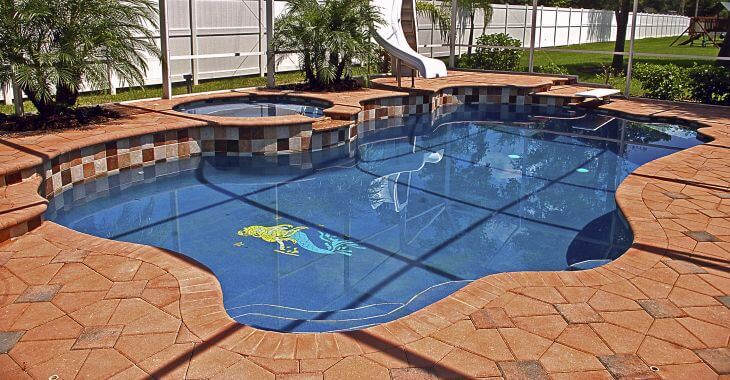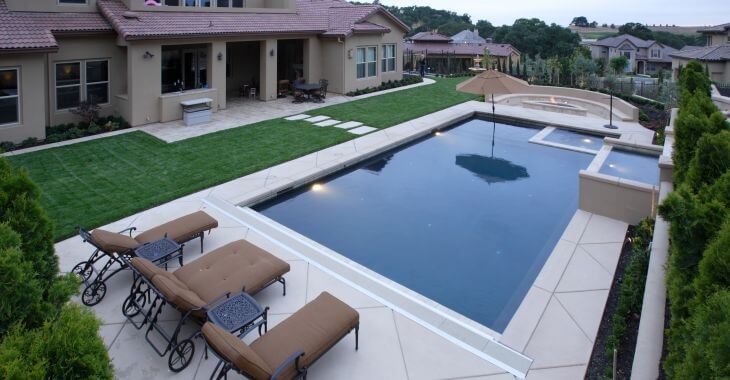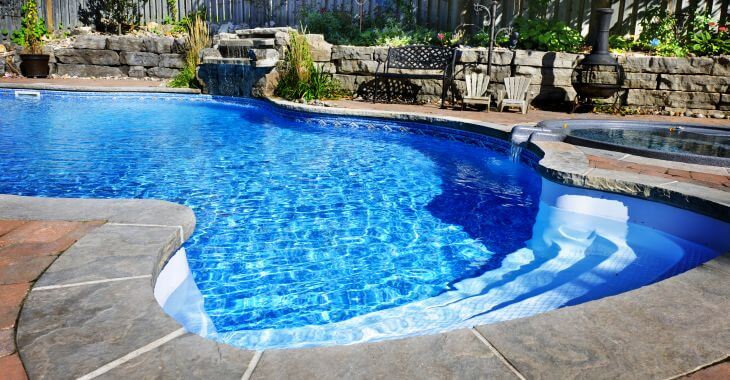Pool Deck Resurfacing: Everything You Need to Know

A pool deck is more than just a functional space; it enhances the aesthetics and safety of your pool area. Over time, however, wear and tear can make your pool deck look old and worn out. Pool deck resurfacing is an effective solution to revitalize this essential part of your outdoor space.
What is Pool Deck Resurfacing?
Pool deck resurfacing involves applying a new layer of material over the existing deck to restore its appearance and functionality. This process can address cracks, discoloration, and surface wear, making your pool deck look brand new.
Resurfacing your pool deck offers numerous benefits. It improves the appearance of your pool area, increases safety by providing a non-slip surface, and extends the lifespan of your pool decking. Additionally, it can enhance the value of your property.
Common signs that indicate the need for pool deck resurfacing include visible cracks, fading color, rough patches, and areas where the surface has become slippery or uneven. Addressing these issues promptly can prevent further damage and ensure a safe, attractive pool area.
Types of Pool Deck Resurfacing Materials
Several materials can be used for pool deck resurfacing, each offering unique advantages. Popular options include concrete overlays, pavers, rubber coatings, and stone finishes. Choosing the right material depends on your preferences, budget, and the existing condition of your pool deck.
Concrete Overlays
Concrete overlays are a popular choice for pool deck resurfacing. They provide a durable, versatile solution that can be customized with various textures, colors, and patterns. This option is ideal for covering minor cracks and imperfections while enhancing the deck’s appearance.
Pavers
Pavers offer a classic, elegant look for pool decking. They are available in various shapes, sizes, and colors, allowing for creative designs. Pavers are also slip-resistant and easy to replace individually if damaged, making them a practical choice for many homeowners.
Rubber Coatings
Rubber coatings provide a comfortable, non-slip surface that is soft underfoot. This option is particularly beneficial for families with children, as it reduces the risk of injuries. Rubber coatings are also resistant to UV rays and chlorine, ensuring long-lasting durability.
Stone Finishes
Stone finishes, such as travertine or slate, add a natural, luxurious feel to pool decking. These materials are highly durable and resistant to extreme weather conditions. Stone finishes require minimal maintenance and offer excellent slip resistance, making them a premium choice for pool decks.
Preparing for Pool Deck Resurfacing
Proper preparation is crucial for successful pool deck resurfacing. This involves cleaning the existing surface, repairing any cracks or damage, and ensuring the deck is level. These steps ensure the new material adheres correctly and provides a smooth, long-lasting finish.
- Cleaning the Surface: Thoroughly cleaning the pool deck is essential before resurfacing. This process removes dirt, algae, and debris, creating a clean base for the new material. Pressure washing is often used to ensure a deep, effective clean.
- Repairing Cracks and Damage: Any cracks or damaged areas on the pool deck should be repaired before resurfacing. This involves filling in cracks with a suitable filler and smoothing out uneven areas. Proper repairs help prevent future issues and ensure a smooth, uniform surface.
- Ensuring Level Surface: A level surface is necessary for a successful pool deck refinishing. Uneven areas should be smoothed out, and any low spots should be filled. This step ensures the new layer adheres properly and provides a safe, attractive finish.
The application process for pool deck resurfacing varies depending on the chosen material. Generally, it involves applying a base coat, adding the resurfacing material, and finishing with a protective sealant. Each step is crucial for achieving a durable, attractive result.
Maintenance Tips
Maintaining your newly resurfaced pool deck is crucial for longevity. Regular cleaning, sealing, and addressing any minor issues promptly can keep your pool decking looking fresh and functional. Avoid using harsh chemicals that can damage the surface.
Regular cleaning helps prevent the buildup of dirt, algae, and debris on the pool deck. Use a mild detergent and a soft brush to clean the surface, and rinse thoroughly with water. This routine maintenance helps maintain the appearance and safety of your pool decking.
Applying a sealant periodically helps protect the pool deck from wear and environmental damage. The frequency of sealing depends on the type of resurfacing material used. Follow the manufacturer’s recommendations for the best results.
Addressing minor issues, such as small cracks or stains, promptly can prevent them from becoming major problems. Regular inspections and timely repairs ensure the pool deck remains safe and attractive.
Pool deck resurfacing is an excellent way to rejuvenate your pool area, enhance safety, and extend the lifespan of your pool decking. By understanding the process and choosing the right materials, you can enjoy a beautiful, durable pool deck that enhances your outdoor space.

If you are not willing to do pool deck refinishing yourself, contact a local landscaper or contractor who offers professional pool deck resurfacing.
